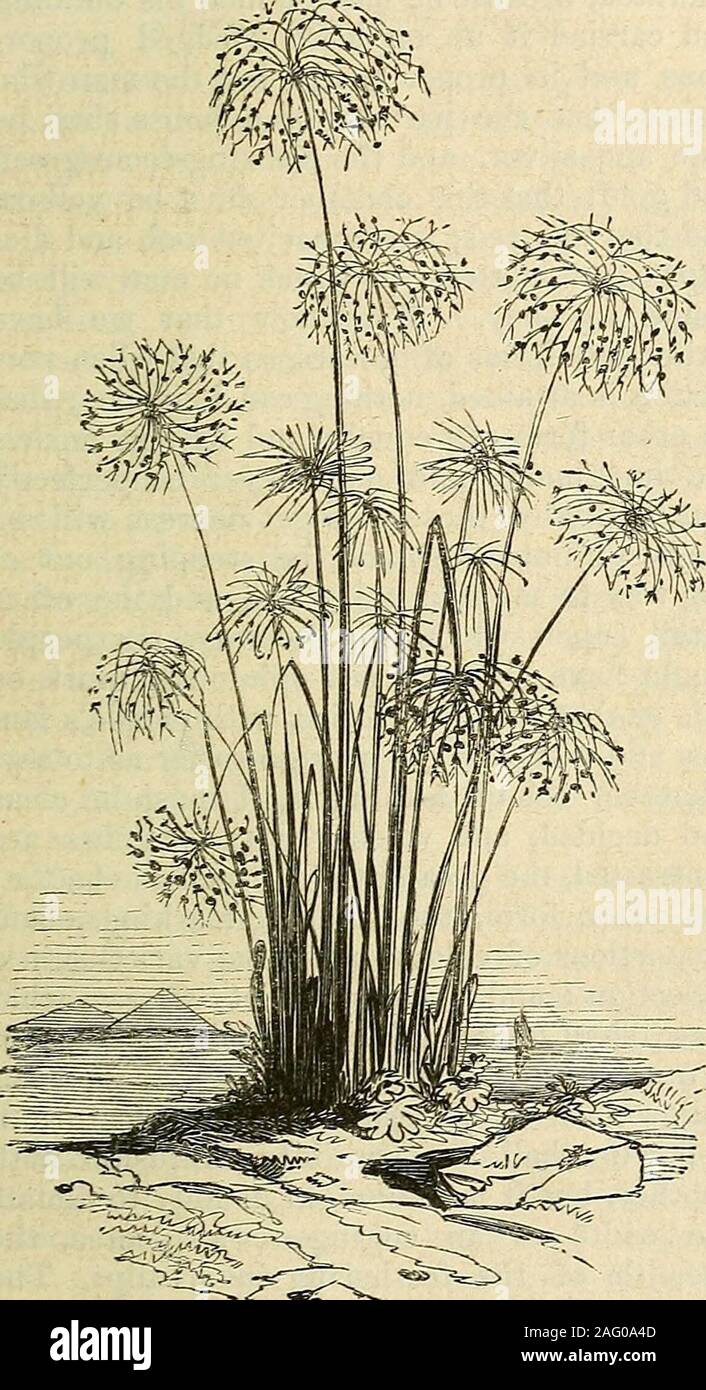. The Annals of Horticulture and Year-Book of Information on Practical Gardening. e, how-ever, it is by no means clear that this is the THE PAPYRUS, OR PAPER REED. plant intended, for the Hebrew term aroththere employed is explained by the learnedin these matters to mean any grassy reed,and the true paper reed has another and FLOWERS AND FRUITS OF SCRIPTURE. 517 quite different name—gome—in the Hebrewlanguage. Other reedy plants are referred toin the Scriptures, under the name agmon. Insome cases it is possible that this latter termmay have reference to the Papyrus, and thisseems especially pr

Image details
Contributor:
The Reading Room / Alamy Stock PhotoImage ID:
2AG0A4DFile size:
7.1 MB (464.9 KB Compressed download)Releases:
Model - no | Property - noDo I need a release?Dimensions:
1165 x 2145 px | 19.7 x 36.3 cm | 7.8 x 14.3 inches | 150dpiMore information:
This image is a public domain image, which means either that copyright has expired in the image or the copyright holder has waived their copyright. Alamy charges you a fee for access to the high resolution copy of the image.
This image could have imperfections as it’s either historical or reportage.
. The Annals of Horticulture and Year-Book of Information on Practical Gardening. e, how-ever, it is by no means clear that this is the THE PAPYRUS, OR PAPER REED. plant intended, for the Hebrew term aroththere employed is explained by the learnedin these matters to mean any grassy reed, and the true paper reed has another and FLOWERS AND FRUITS OF SCRIPTURE. 517 quite different name—gome—in the Hebrewlanguage. Other reedy plants are referred toin the Scriptures, under the name agmon. Insome cases it is possible that this latter termmay have reference to the Papyrus, and thisseems especially probable in the passage, (Isa.lviii. 5, ) where the prophet inquires in bitterirony, if the fast acceptable to the Lord is fora man to bow do wn his head as a bulrush. Theforce of the allusion will be seen by a referenceto the accompanying engraving. It is a coin-cidence somewhat favouring the view justexpressed, that the term bulrush, which hasbeen adopted by our translators, in this pas-sage of Isaiah, has also been used in those inwhich it is certain that the paper reed is. Papyrus antiquorum. intended, the original reading being gome, theHebrew name of the Papyrus. It may, more-over, be mentioned, that few plants more illaccord with the idea of bowing the head, than does the bulrush or Typha, one of themost erect, rigid, and unbending of herbs.It appears that the word gome occurs in butfour instances in the Scriptures, and in two ofthese is in our version rendered bulrushes.These passages occur in Exodus ii. 3, andIsaiah xviii. 2. In Job viii. 11, and Isaiahxxxv. 7, it is translated rushes. No mention of the Papyrus appears to bemade in the Scriptures in connexion with theuse which has given it its name. In both thepassages referred to, the allusion is to theancient application of the reed in the con-struction of floating vessels. Thus we aretold that Jochebed, the mother of Moses, when she could no longer hide her infant son, took for him an ark of bulrushes, anddaubed it w